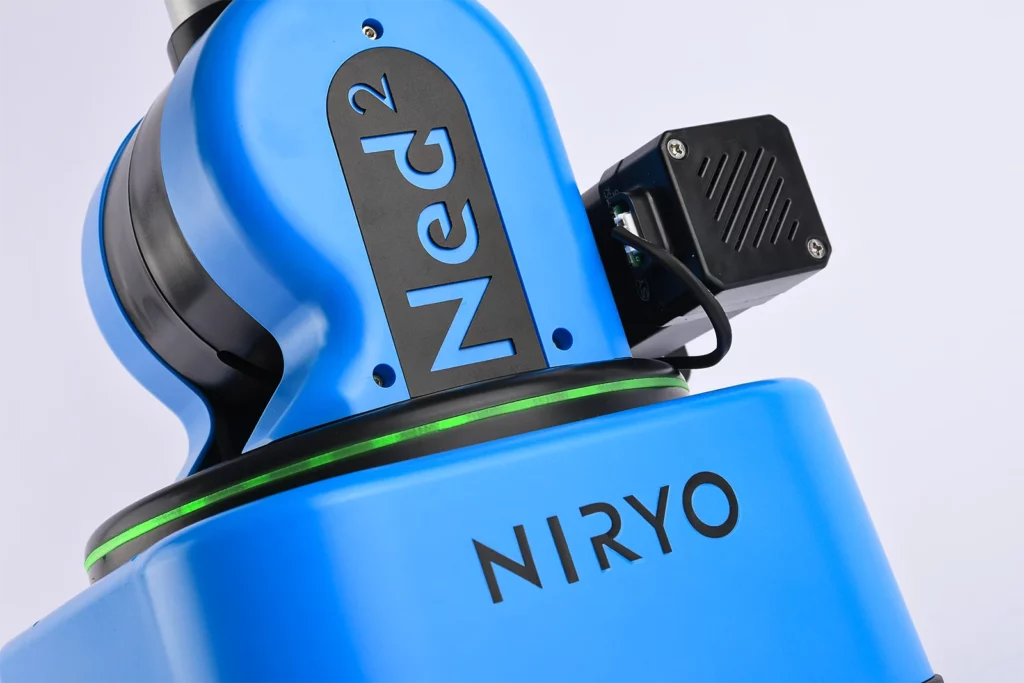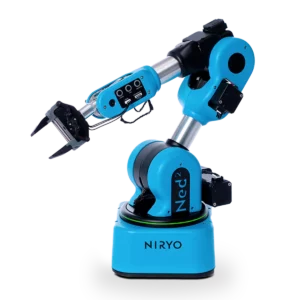In 2016, we wrote one of our first blog articles about robots’ accessibility.
The observation, which was the reason why Niryo has been created, was alarming: getting access to robots is difficult as robots are expensive, take a lot of space, the programming languages are very specific and need important knowledge. Learnings are mostly theoricals and thus, students can’t find fulfilment and can’t get the chance to manipulate real cobots or robots.
We, Niryo, are convinced, as many others, that the future will be dedicated to robotics. However, we know that, if we want robotics to be, indeed, part of our future, it needs to be accessible to anyone.
That is the reason why education is the core of our development. Our team members know the needs you might have when you are a robotics student or a researcher. It is essential to support students in the development of their knowledge in robotics, by offering them solutions tailored to their needs and levels. These solutions give them the opportunity to discover the large spectrum collaborative or services robotics offer, on their own.
That is also the reason why we developed, in the first place, the Niryo One, and, more recently, Ned, two open-source and accessible robots. Creating an open-source solution offers a multitude of possibilities to the users, the multiple programming languages allow novices and experts to control the robot, and Niryo Studio, for the ones starting their learning. Internally, we are working with members with no specific knowledge in robotics, of the different poles, in order to measure the real accessibility of our solutions.
What is today’s observation?
Nowadays, the notion of accessibility is still topical. Indeed, the needs in collaborative robotics are more and more present, as the industry is evolving and transforming.
The robotics’ market has been constantly growing since the last few years. Indeed, according to the Boston Consulting Group, the robotics market has known an annual growth rate around 7,2% during the last 20 years, a growth rate expected to be maintaining or increasing by 2025.
Even if we are fully conscious of the potential of robotics, we, as well as the other actors of the industrial field, have seen, last year, that robotics is a major cornerstone of our society.
Indeed, in this period of global pandemic and generalized economic crisis, the industrial robotics market continued to grow. This is mostly thanks to robotics that some factories were able to continue to produce, despite generalized lockdowns. These solutions were also the opportunity to maintain the production while taking care of the employees’ health.
Some other technological breakthroughs allow the development of the sector, such as the improvement of the captors on industrial and collaborative robots, the improvement of Artificial Intelligence and image processing, as well as the implementation of 5G networks, that might be the source of a turning point in the robotics industry.
That is also an observation made within Niryo. Indeed, needs and demand are growing, which allow us to experience a constant growth since the beginning of Niryo, as shown by the following figures:
What the situation will be in five years?
Even if it is difficult to foresee the future, as 2020 has proved us, the forecasts concerning the robotic industry are excellent and are going towards a massive development of robotics, in particular collaborative robotics, in the industrial field.
The development of new technologies pushes us, each day, to do better and answer the needs of tomorrow.
We hope we will be able to provide an update to this article by then!















